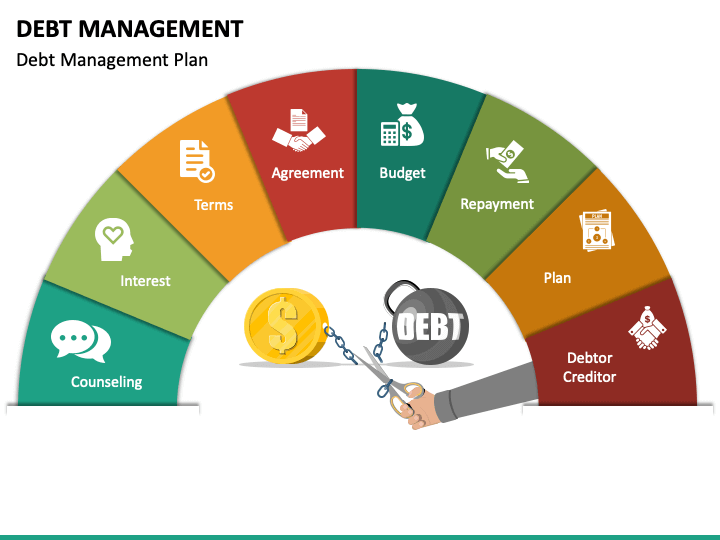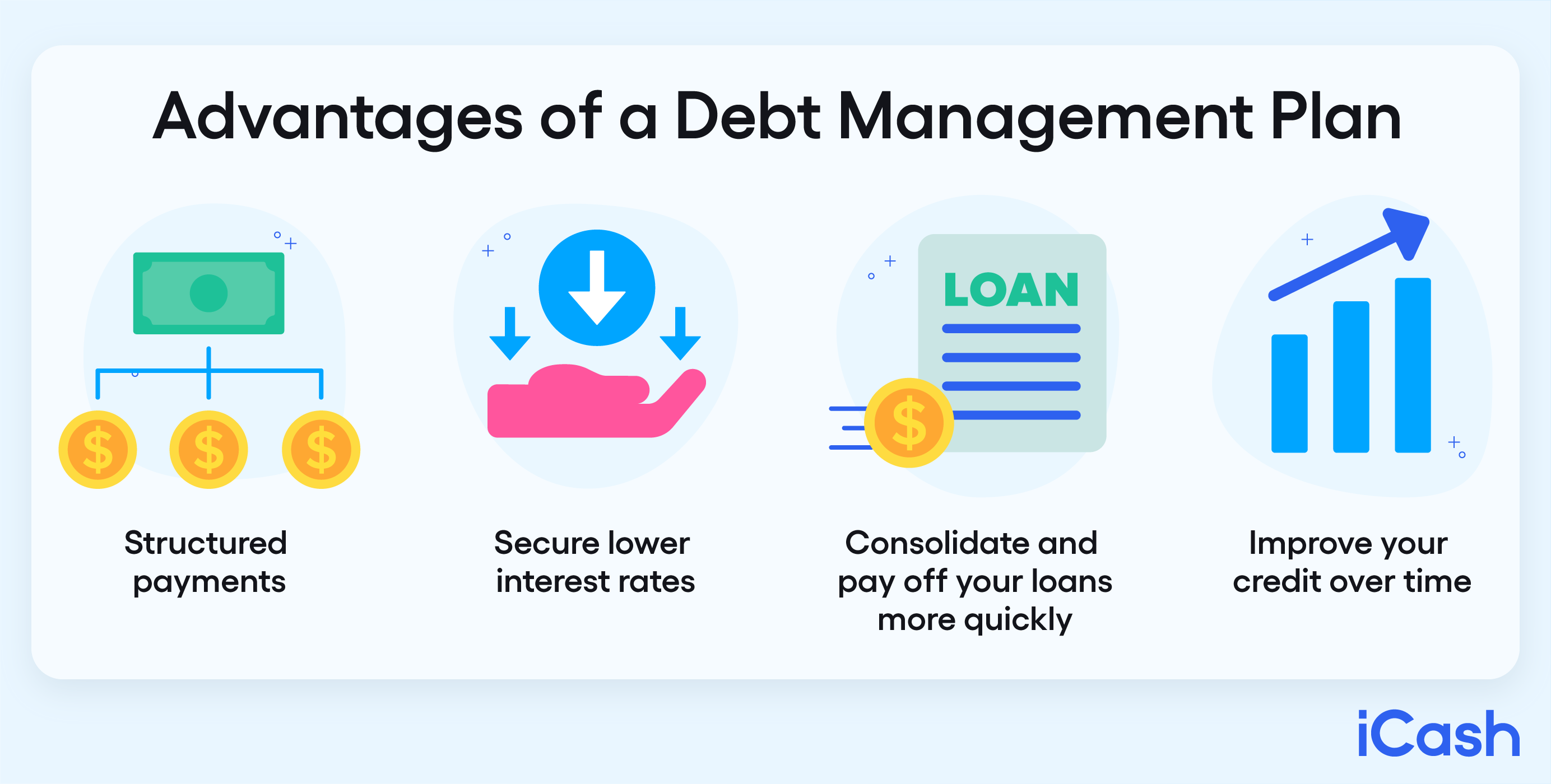Is Debt Loan Consolidation Right for You? A Lot More Discussion Posted Here
Is Debt Loan Consolidation Right for You? A Lot More Discussion Posted Here
Blog Article
Every Little Thing You Need to Learn About Developing a Customized Financial Debt Management Plan
In the realm of personal financing, creating a customized financial obligation administration strategy is commonly the foundation of attaining economic stability and satisfaction. By diligently reviewing your present economic obligations, establishing achievable financial goals, and crafting a sensible spending plan, you pave the method for efficient financial debt settlement approaches. However, the journey to economic liberty is not exclusively regarding first planning; it likewise calls for continuous surveillance and changes to guarantee continued progress. As you navigate the complexities of creating an individualized debt monitoring strategy, comprehending the intricacies of each action is key to your financial success.
Assessing Your Current Debt Circumstance
One need to initially conduct a complete evaluation of their present financial debt commitments before developing a reliable financial debt management plan. Produce an in-depth checklist of each debt, consisting of the overall amount owed, interest rates, minimum regular monthly settlements, and due days.
After compiling this information, determine your complete debt-to-income ratio by separating your monthly debt settlements by your regular monthly revenue. Recognizing these aspects of your monetary circumstance will direct you in creating a tailored debt monitoring plan customized to your specific requirements and goals.
Setup Financial Goals and Targets

When establishing financial objectives, it is very important to be specific, quantifiable, achievable, pertinent, and time-bound (CLEVER) For instance, you could set a goal to settle a certain amount of debt within a details amount of time, such as reducing your charge card equilibrium by $5,000 in the next twelve month - More Discussion Posted Here. By setting clear targets like this, you can track your progression and remain motivated to attain your financial obligation administration objectives
In addition, consider prioritizing your financial debts based upon variables such as rate of interest, impressive equilibriums, and repayment terms. By concentrating on high-interest debts initially, you can conserve cash over time and accelerate your journey towards monetary freedom. Keep in mind, everyone's economic scenario is distinct, so customize your targets and objectives to fit your specific requirements and scenarios.
Creating a Realistic Budget
Crafting a well-defined budget is a basic action in reliable financial debt management and financial planning. A practical budget offers as a roadmap for your monetary wellness, aiding you track your revenue, costs, and debt repayments. To create a functional spending plan, beginning by detailing all your income sources. This includes your income, side hustle revenues, or any kind of various other financial inflows. Next, catalog all your dealt with expenditures such as rent or home loan, utilities, insurance, and car loan payments. Variable costs like grocery stores, home entertainment, and transport must likewise be included. Distinguish between requirements and wants to prioritize vital expenditures and determine areas where you can cut back.
When setting spending plan limitations, be straightforward with yourself about your spending practices and economic commitments. Assign a portion of your revenue towards repaying financial obligation while ensuring discover this info here you have some funds for savings and emergency situations. Consistently testimonial and readjust your budget as required to remain on track with your monetary goals and financial obligation repayment strategy. By sticking to a sensible budget, you can efficiently handle your financial obligation and work in the direction of a much more safe financial future.
Discovering Debt Payment Techniques
After developing a sensible budget, the next critical action in reliable debt administration is to discover various debt settlement approaches. One common strategy is the snowball approach, where you focus on settling the smallest financial obligations initially while making minimum payments on bigger debts. This approach can assist develop momentum as you see smaller sized financial obligations being removed, supplying inspiration to deal with larger ones.
An additional method is the avalanche method, which involves focusing on financial debts with the highest possible rate of interest. By targeting high-interest financial obligations first, you can lower the total quantity you pay in interest in time. This approach may be more cost-efficient in the future, despite the fact that it may take longer to see specific financial obligations completely paid off.
Debt consolidation is one more choice where you incorporate numerous financial debts into a single finance with a reduced rates of interest. This can simplify your repayment process and potentially lower the overall rate of interest paid. Nevertheless, it's necessary to carefully consider the fees and terms related to debt consolidation to ensure it's the best option for your financial circumstance.
Tracking and Readjusting Your Strategy

Readjusting your plan might include reapportioning funds to take on high-interest debts initially, bargaining with creditors for lower rates of interest or far better settlement terms, or checking out extra earnings resources to speed up debt repayment. As your financial circumstance progresses, Look At This your financial debt administration strategy ought to adjust accordingly to remain efficient. By staying versatile and proactive in monitoring and changing your plan, you can enhance your efforts in the direction of settling your financial obligations effectively and attaining your monetary goals.
Final Thought
In conclusion, developing a tailored financial debt monitoring strategy includes assessing existing debt, establishing economic objectives, creating a realistic spending plan, checking out payment approaches, and surveillance and readjusting the plan as required. By following these actions, individuals can take control of their economic scenario and job towards ending up being debt-free. It is essential to remain regimented and dedicated to the plan in order to achieve long-lasting monetary stability.
One should first carry out a thorough examination of their existing debt obligations before formulating a reliable financial debt administration plan.After developing a reasonable spending plan, the next critical action in reliable financial obligation management is to explore numerous debt repayment approaches - More Discussion Posted Here.To efficiently manage your debt, continuous monitoring and modification of your financial debt management strategy are crucial components for long-term monetary stability.Adjusting your plan might entail reapportioning funds to tackle high-interest debts initially, discussing with lenders for lower interest prices or much better payment terms, or discovering added income sources to accelerate debt repayment.In conclusion, producing a personalized debt administration strategy entails examining existing debt, setting financial objectives, producing a reasonable budget, exploring settlement methods, and surveillance and changing the strategy as required
Report this page